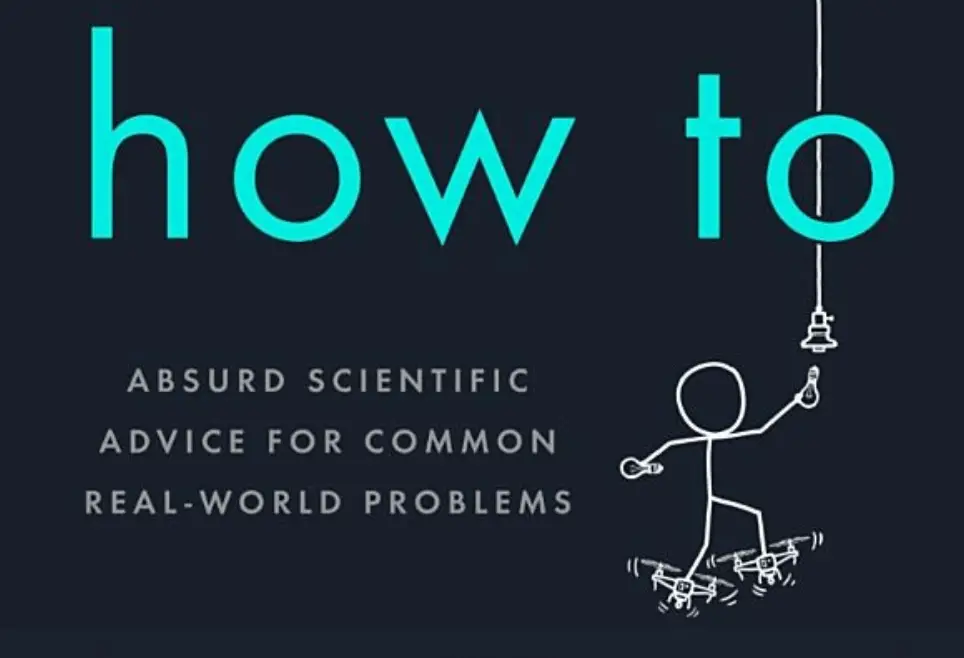“At some point, they did not renew my contract,” said Randall Munroe of NASA, to the crowd at this year’s New York Comic Con. “They always mention this NASA stint in my bio,” Munroe said, even though he didn’t work there that long and “left” in 2006.
While there, Munroe worked on robot navigation, which makes most people think of the Curiosity rover on Mars, he said. It was a little more mundane than that, as he designed demonstrations for sensors that might go on rovers.
“It was designed to explore the floor around our lab,” Monroe said of the surprisingly strong automaton meant to avoid obstacles and keep moving. At one point, he discovered the robot could pull him, and decided to see how far it would go. The result, as the pair zoomed past puzzled onlookers in other offices, was the “first circumnavigation of that building by an autonomous chariot system.”
“So I don’t know why they didn’t want to renew my contract,” he said. Still, they did offer to find him “something else to work on.”

Thankfully for fans of biting satire, science, programming, love, and stick figures, Munroe moved on. Launched toward the end of his NASA tenure, the webcomic xkcd has become legendary to legions of geeks who never dared to dream others found humor in these things. They love it so much, they even bought IRL versions of the strip, collected in something called a “book.”
Munroe’s published two other, non-xkcd books since, and at NYCC 2019, he was in town for an entire “panel” devoted to telling stories of how his newest was made. How To, “a profoundly unhelpful self-help book,” began as an exercise in compiling bad ideas.
“You can never tell whether an idea is good or not, for sure,” Munroe said. CFCs transfer heat really well, although they also break down the atmospheric ozone that protects us from ultraviolet radiation. Leaded gasoline helps keep car engines from breaking down, but, you know, heavy metal poisoning.
“Fun fact, those were both [from] the same guy,” Munroe said. “You can look him up; it’s a rough legacy.”
Munroe illustrated the point with (well, okay,) the Curiosity rover. Martian probes of the recent past have utilized a lander covered in airbags to absorb some impact, but the car-sized Curiosity was just too big. In the thin atmosphere, a parachute wouldn’t slow it enough and retro rockets couldn’t be precisely controlled, since radio signals take 14 minutes to make it from Mars to Earth, and back. So what if a hovering “skycrane” lowered the rover slowly?
“This sounds like a terrible idea to everyone,” Munroe said, “but they couldn’t find a specific problem with it,” or a good reason it shouldn’t work. Lo and behold, they went with it, and it turns out “these ridiculous ideas can actually work.”
Other unnecessarily complicated solutions in How To: Absurd Scientific Advice for Common Real-World Problems include moving your entire house by helicopter and using Serena Williams’ deadly tennis serves as a drone deterrent. It’s not all about flying things (seriously, there’s a great section on how to develop the most unpopular political campaign in history), but Munroe also highlighted a conversation with Colonel Chris Hadfield, test pilot of 100 different aircraft and former commander of the International Space Station.
“I arranged my questions from least ridiculous to most,” Munroe said, wanting to cover as many weird situations as possible before the hero gave up on him. Questions like, if you have a mechanical failure over farmland and have to crash land, which crop do you steer for?

“I fly small planes and I think about that stuff all the time,” was Hadfield’s surprising response, Munroe said. “And then he started rattling off different crops and what time of year is best to land on them.”
Could I match speed with a train? “Oh yeah, people have done that. Flatbed trucks, too.” What about landing on a ski jump? “You couldn’t do that. Before I went into the Canadian Air Force, I used to be a ski instructor.”
Slightly off-topic, Munroe concluded with a plea to not make fun of people who don’t know something that seems like common knowledge. You don’t want to stifle anyone’s curiosity, and we were all there once.
“Even if there’s something everyone knows, they’re making new people all the time,” he said.
How To: Absurd Scientific Advice for Common Real-World Problems is available now.
AIPT Science is co-presented by AIPT and the New York City Skeptics.
Join the AIPT Patreon
Want to take our relationship to the next level? Become a patron today to gain access to exclusive perks, such as:
- ❌ Remove all ads on the website
- 💬 Join our Discord community, where we chat about the latest news and releases from everything we cover on AIPT
- 📗 Access to our monthly book club
- 📦 Get a physical trade paperback shipped to you every month
- 💥 And more!













You must be logged in to post a comment.